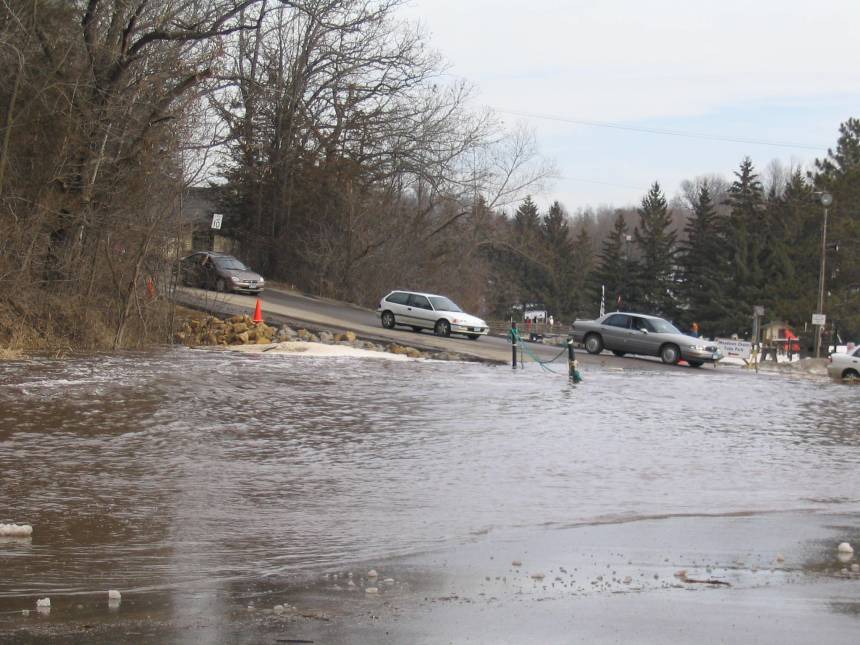Nature is a fickle companion, sometimes warm and nurturing, other times cruel and callous. It is ever changing and unpredictable, and yet highly successful at raising a large and raucous family of 8 billion humans, 3 trillion trees, 3.5 trillion fish, and 20 quadrillion ants (give or take a few).
Thanks to our intelligence and ingenuity, we humans have become master manipulators of this world. Much like the raccoon who gets its hand stuck in a jar because it’s unwilling to release its treasure, however, we run into problems when we set aside that intelligence in favor of quick and “easy” solutions that give use short term gratification at the expense of long-term sustainability.

“Sometimes we engineer ourselves into problems when we don’t pay attention to the landscape. Our tendency to cover areas with impervious surfaces and restrict the movement of our rivers and lakes works against us, and it prevents nature from doing a lot of the hard work of infiltrating, moving, and storing water for us. We need to work more with natural systems versus against them,” writes Barbara Heitkamp, an outreach educator with the Lower St. Croix Watershed Partnership and East Metro Water Education Program.

Seventy-five percent of Minnesotans get their water from groundwater (100% in Washington County) but the conventional designs for roads and buildings in our developed areas sends rain and melting snow into stormwater pipes that connect to large river systems and then off to the ocean. A similar problem occurs in agricultural areas, where farmers are increasingly using drain tile and ditches to pull water off the land so that it can be cultivated more easily.
In the short term, our human engineering allows us to enjoy suburban neighborhoods with tidy yards and farm fields that produce a seemingly limitless yield. As we hold our fists clenched tight in the jar, however, we can also see the increasingly devastating impacts of flooding, runoff pollution, and aquifer drawdown that happen when we try to override nature.

One way to make better use of nature’s readymade bioengineering is through green infrastructure practices such as raingardens, green roofs, and permeable pavement that help to catch water and hold it on the landscape for future use. In addition to increasing groundwater recharge and decreasing stormwater runoff, green infrastructure practices also create habitat for birds and pollinators, filter air pollution, improve soil health, and add natural beauty to our built environments.
In 2004, the City of Burnsville, Minnesota completed a landmark study that showed it was possible to reduce stormwater runoff in a typical residential neighborhood by 80-90%, simply by planting 18 raingardens in strategic locations along the road and drainage pathways. Raingardens are bowl-shaped gardens that capture and infiltrate runoff from rooftops, driveways and roads when it rains. In subsequent years, numerous east metro communities, including Stillwater, Maplewood, Marine on St. Croix, and Woodbury, have constructed raingardens along roadways to reduce stormwater pollution.
Like raingardens, green roofs and porous pavement mimic natural systems. Green roofs replace shingles with low-growing plants that create pockets of habitat, reduce the urban heat island effect, and hold water from small rain events. Porous pavement allows rains to soak into the ground so that it can recharge surficial groundwater aquifers instead of running off into the stormwater system. Green infrastructure can also be combined with smart growth strategies that preserve high quality forests, wetlands, and prairies in our communities for wildlife habitat and ecosystem services.
In essence, we can think of water management strategies as existing along a spectrum from grey to green (Taguchi, et. al. 2020). On one side, we have ultra-urban cities that are covered with concrete, pipes, and canals; on the other, we find wilderness areas that are permanently protected from human intervention.
Somewhere in the middle, we take a modified approach with green infrastructure and open space protection that allows us to continue living here on earth, without causing worldwide calamity in the process.

Building green with nature – excellent! Thank you 🙏🌍
LikeLiked by 1 person